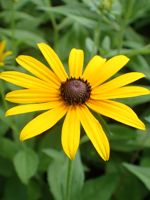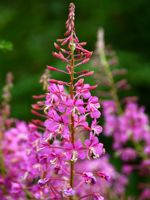Mon-Fri 9am - 5pm Mountain time
Black-Eyed Susan vs Fireweed
Rudbeckia hirta
Chamaenerion angustifolium (Epilobium angustifolium)
NOT AVAILABLE THIS SEASON - MIGHT RETURN
CUSTOM GROW
Black-Eyed Susan is a striking native wildflower known for its bright yellow, daisy-like flowers with dark center disks. With deadheading, the plant can bloom for an extended period, from mid-summer to early fall. These cheerful flowers attract a variety of pollinators, including bees and butterflies. Adding to its ecological value, the plant also acts as a host for the Wavy-Lined Emerald Moth (Synchlora aerata) and the Silvery Checkerspot (Chlosyne nycteis) butterfly.
While it is typically a short-lived perennial or biennial, the plant freely self-seeds. This allows it to persist in the landscape, particularly in natural areas where it can spread and establish itself. This plant is drought-tolerant, salt-tolerant, and deer and rabbit-resistant, making it ideal for challenging environments. The Black-Eyed Susan is well suited to wildflower gardens, pollinator gardens, as well as slopes, banks, and naturalized areas.
Fireweed is a native perennial wildflower known for its tall spikes of bright pink to purple blooms. Its long-lasting summer flowers are an important nectar source for pollinators such as bees, butterflies, and hummingbirds, while its seeds provide food for birds. Its showy, long-lasting display makes it visually striking in naturalized plantings.
Fireweed gets its namesake because it is often one of the first species to return after wildfires, supporting ecosystem recovery. Its wind-dispersed seeds allow it to spread readily, making it highly effective in large-scale restoration, revegetation, and naturalization projects.
Fireweed is the Provincial Flower of the Yukon.

